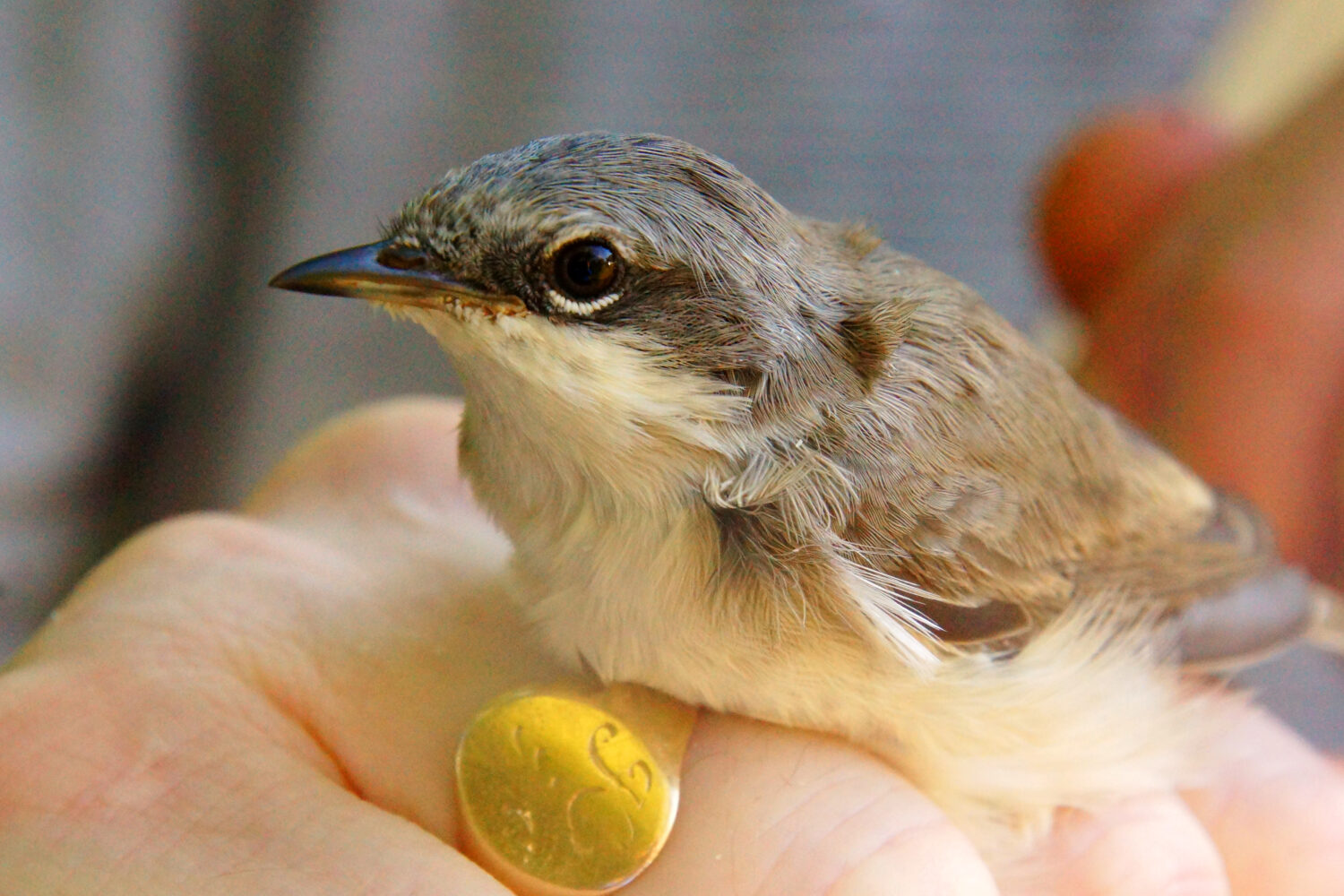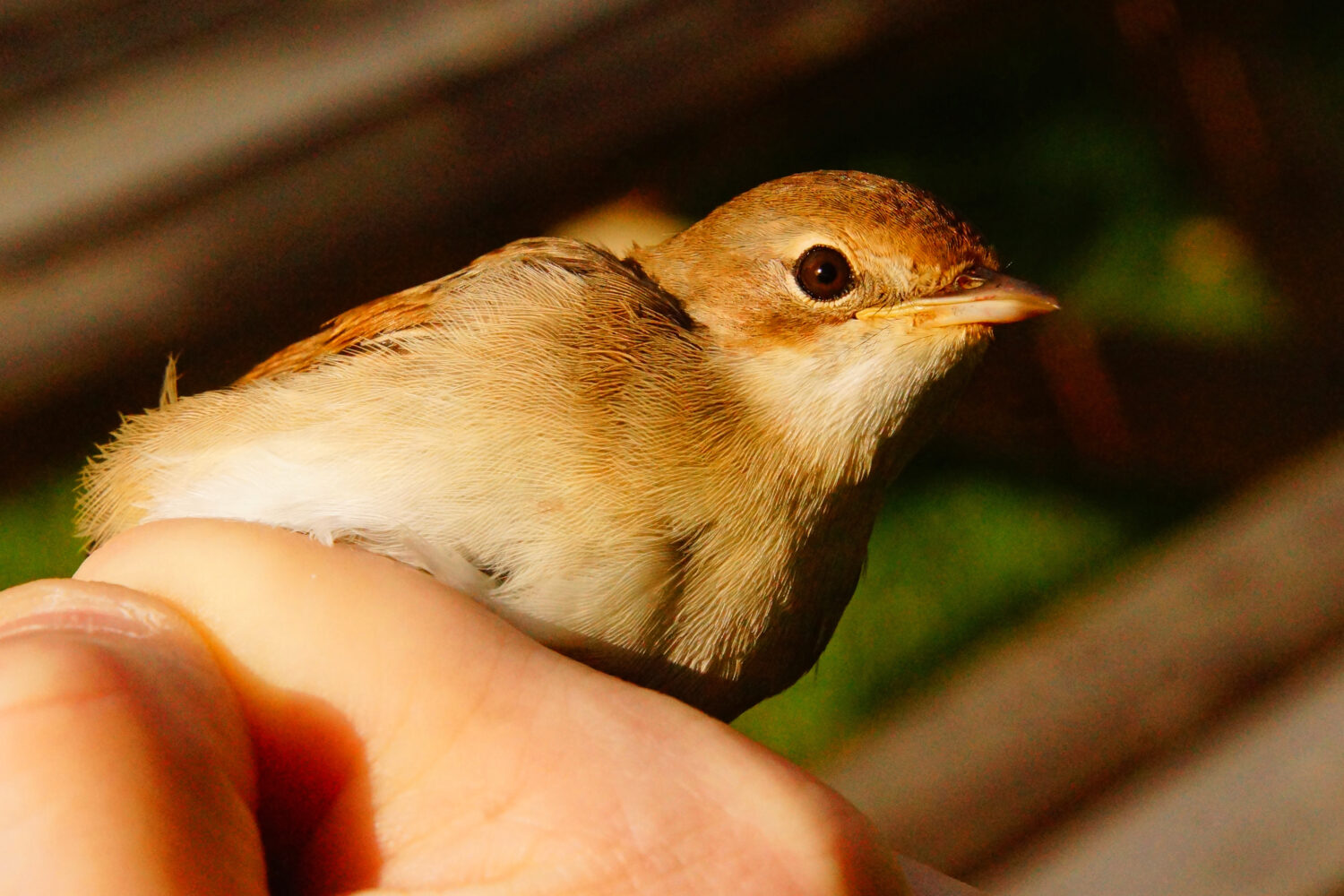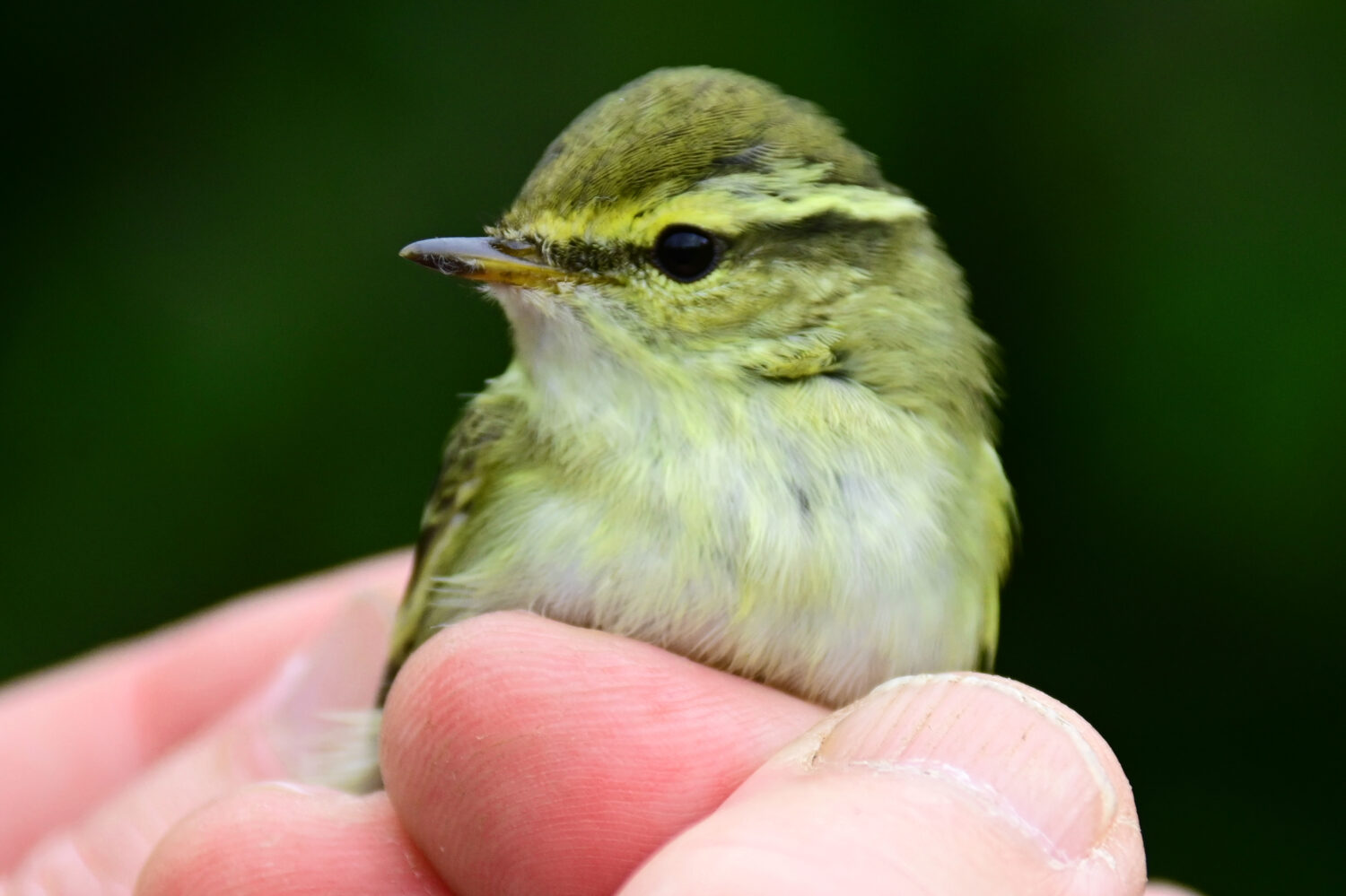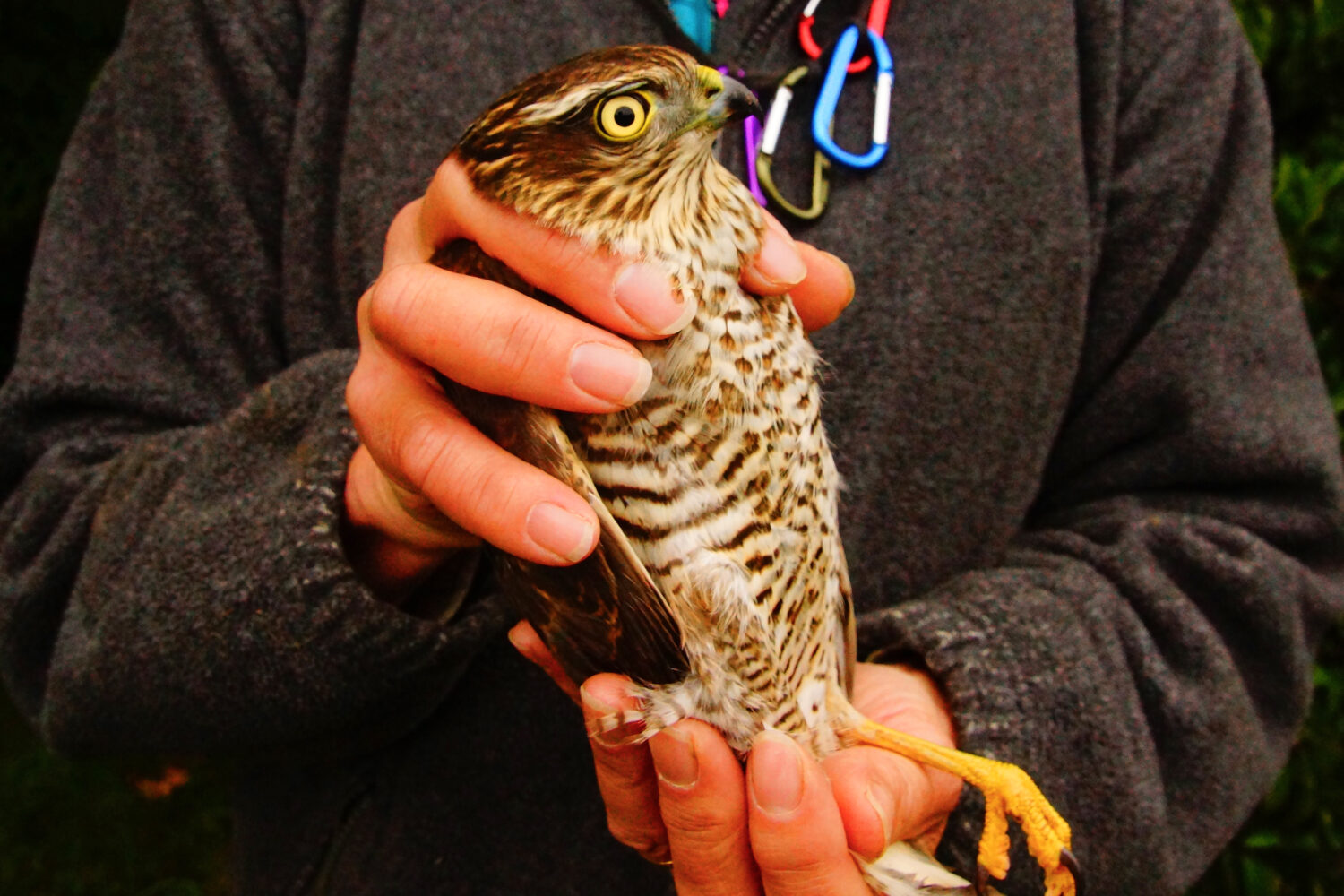North East ornithologist, Phil Hanmer, shares a new update summarising bird ringing across Northumberland throughout September.

Lesser Whitethroat © Phil Hanmer
As we come to the end of the Barn Owl nesting season, owl workers start to get their detailed records sent into the BTO. This then turns up a lot of information on the birds ringed and then recaptured or found. In this respect the sad ones are the early deaths. For example, a young owl from near Netherwitton, only ringed on the 1 July that turned up dead after apparently trying to navigate the road network around Morpeth and Pegswood on the 17 September.
Better news comes about four adults that are still alive, including a Scottish bird hatched somewhere near Jedburgh in 2020 that is now residing near Earle. A bird hatched near Longhorsley in 2016 is still in the same area. In addition, a breeding female laid a clutch of three eggs in May but then stopped incubating them. However, she then laid a second late clutch of 6 in June and I ringed the 4 surviving chicks in August. Another male bird that was hatched in the Upper Breamish Valley in 2016 nested successfully near Netherwitton, raised 2 young and is consequently at least 6 years old. Finally, a long-favoured owl site near Fallodon that had been vacant in 2021 was repopulated by a new pair and the male bird was found to have come from Howick after being hatched in 2014.
I have also had news of everyone’s familiar Blue Tit. Two birds have been travelling in a small way. APK5924 ringed in July 2021 near Swarland was controlled at Howick Ringing Station on the 20 September 2022 while AXR3322 also ringed near Swarland in September 2021 was also found to be at Howick on the 2 September 2022.

Common Whitethroat © Phil Hanmer 
Yellow-browed Warbler © Phil Hanmer
This brings us neatly to events at Howick Ringing Station during September that have been much disrupted by the weather. On the 2September we captured 43 birds including 32 new birds and 11 retraps. One retrap Blue Tit turned out to be 5 years old but the best catch of the day was a new young Lesser Whitethroat along with several Blackcaps and Chiffchaffs all in the process of migrating south towards Africa. The 17 September proved to be a busy day with a catch of 82 birds 61 new and 21 retraps. There was a juvenile Common Whitethroat, more Blackcaps, Chiffchaffs and two adult Willow Warblers. Willow Warblers are a much rarer bird than its cousin the Chiffchaff Warbler at Howick these days. The Whitethroat is on its way to winter in West Africa east to the Sudan while the Lesser Whitethroat is heading towards North East and central Africa.
The 20September saw the catch rise to 93 birds including 79 new and 14 retraps. There was what seem to have been migrating-in Mistle and Song thrushes. We also captured a Yellow-browed Warbler, the most beautiful of rare but regular migrants on its way from Siberia to Africa. We also encountered part of the resident Howick Long-tailed Tit flock and several House Sparrows which is not a bird we usually see at Howick! Numbers returned to normal on the 23September as we caught 42 birds including 21 new and 21 retraps. These were a Chaffinch from 2015 and several Bullfinch along with other mostly resident rather than migrant birds. Finally, on the 25September we captured 25 birds, 40 new and 16 retraps. Chiffchaffs and Blackcaps were again in evidence and some suspicious looking Blackbirds that may well be migrants coming in from Scandinavia. Some excitement was provided by the capture of a young female Sparrowhawk that did its best to injure one of my C Ringers with its needle-sharp claws. It had apparently been trying to catch a blue tit for its elevenses.

Sparrowhawk © Phil Hanmer